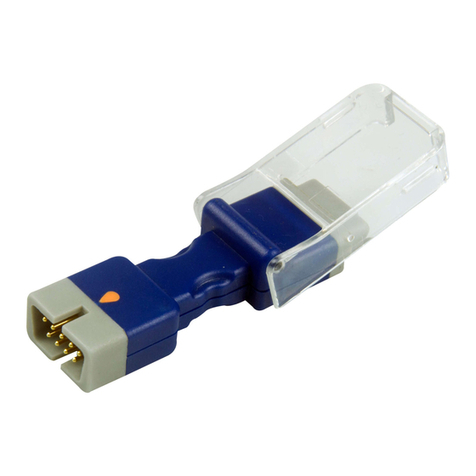
10 11
force and applicable to it.
Warning
• Before using the sensor conrm that the reading is set to zero. If
a non-zero reading is showing manually set to zero. Non-zeroing
may result in incorrect readings.
• Sensors are designed for use with specic monitors.
• The operator is responsible for checking the compatibility of the
monitor and sensor before use.
• Incompatible components can result in degraded accuracy and
performance.
• Consult the operation instructions for the equipment concerned
and the related accessories before operating equipment to
ensure their compatibility.
• Portable and mobile RF communications equipment can aect
the equipment.
• Do not use the sensor during MRI scanning. Conducted
current may cause burns on the patient. The sensor may aect
the MRI image, and the MRI unit may aect the accuracy of
measurements.
• Do not immerse sensor or sensor connector ends in cleaning
solution(s).





























